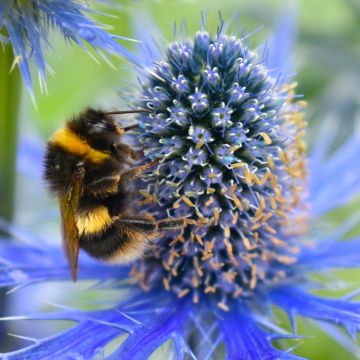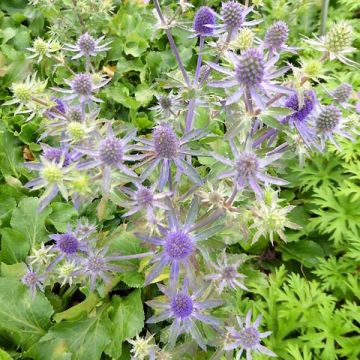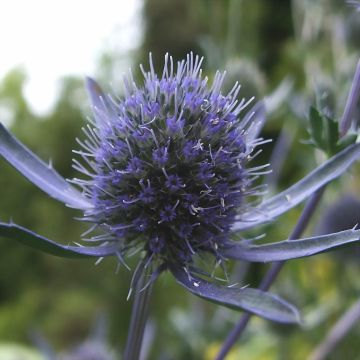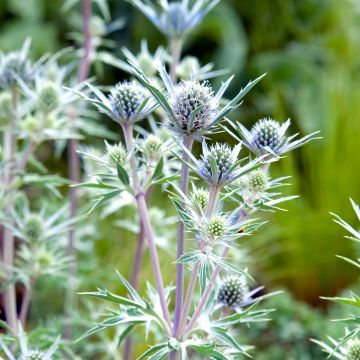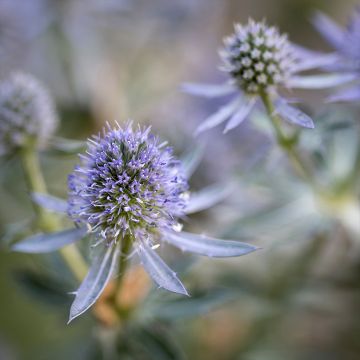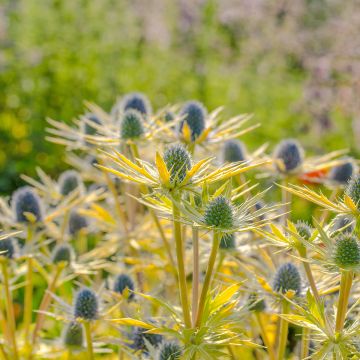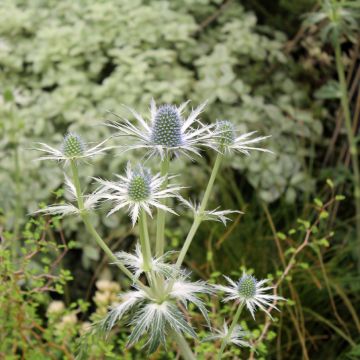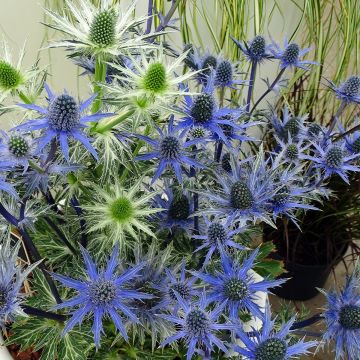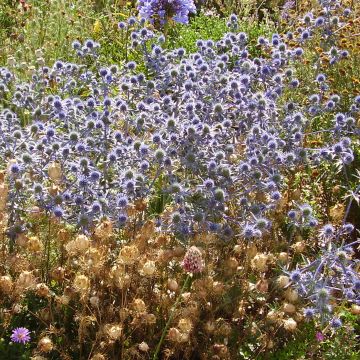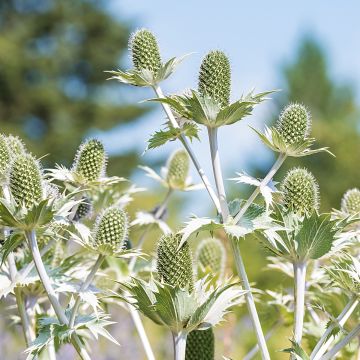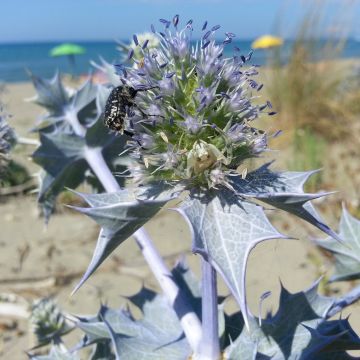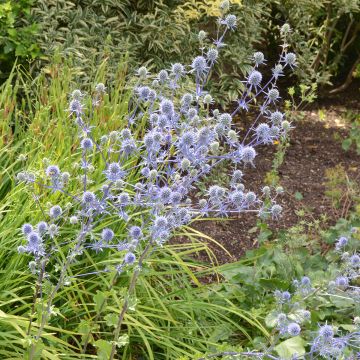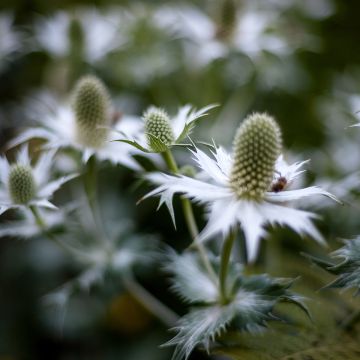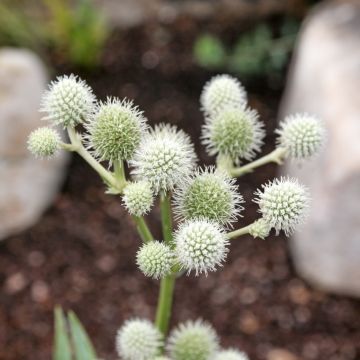Shipping country and language
Your country of residence may be:
Your country of residence is:
For a better user experience on our website, you can select:
Your shipping country:
Andorra
Austria
Belgium
Bulgaria
Canada
Chile
Croatia
Cyprus
Czechia
Denmark
Estonia
Finland
France
Germany
Greece
Hungary
Iceland
Ireland
Italy
Latvia
Lithuania
Luxembourg
Malta
Monaco
Netherlands
Poland
Portugal
Romania
Slovakia
Slovenia
Spain
Sweden
Switzerland
United Kingdom
We only deliver seed and bulb products to your country. If you add other products to your basket, they cannot be shipped.
Language:
French
German
Spanish
English
My Account
Hello
My wish lists
Plantfit
Log in / Register
Existing customer?
New customer?
Create an account to track your orders, access our customer service and, if you wish, make the most of our upcoming offers.
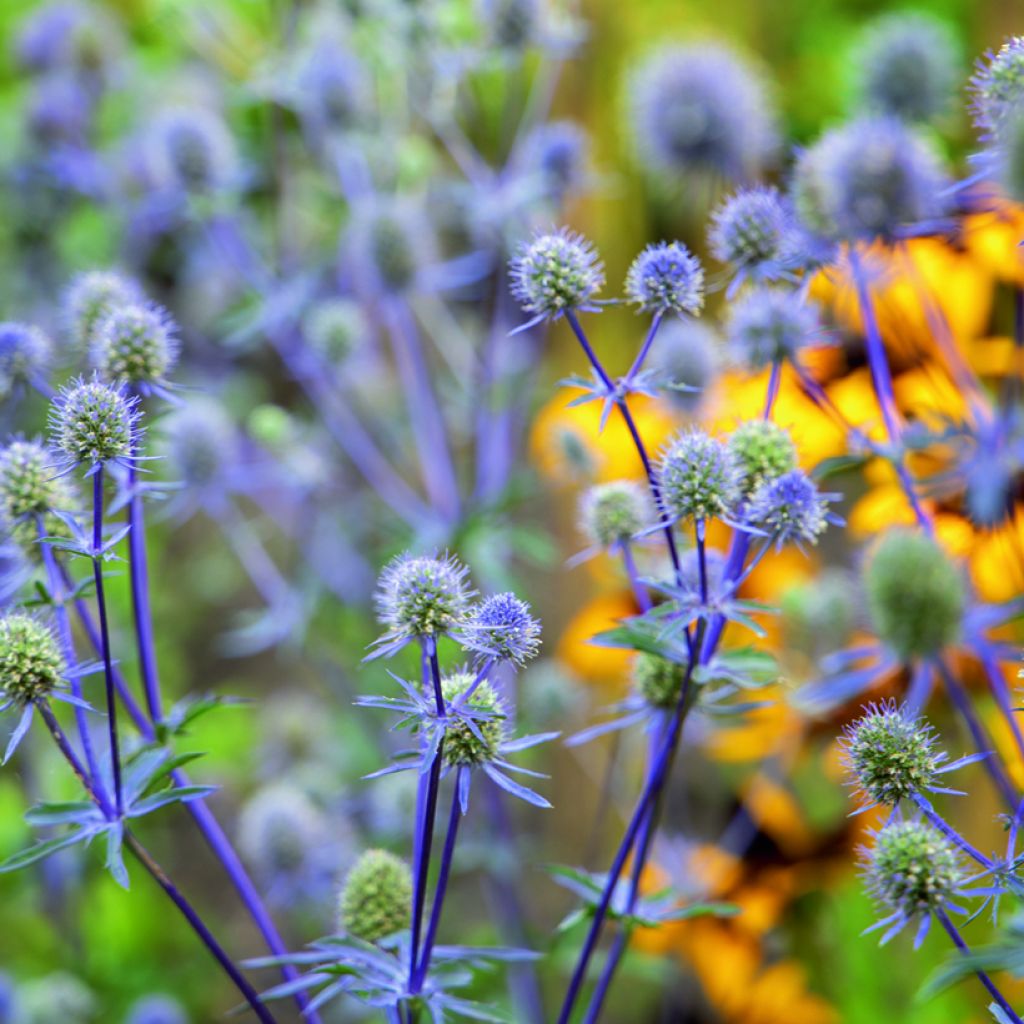

Eryngium planum Blue Glitter seeds - Flat Sea Holly, Blue Eryngo, Blue Sea Holly
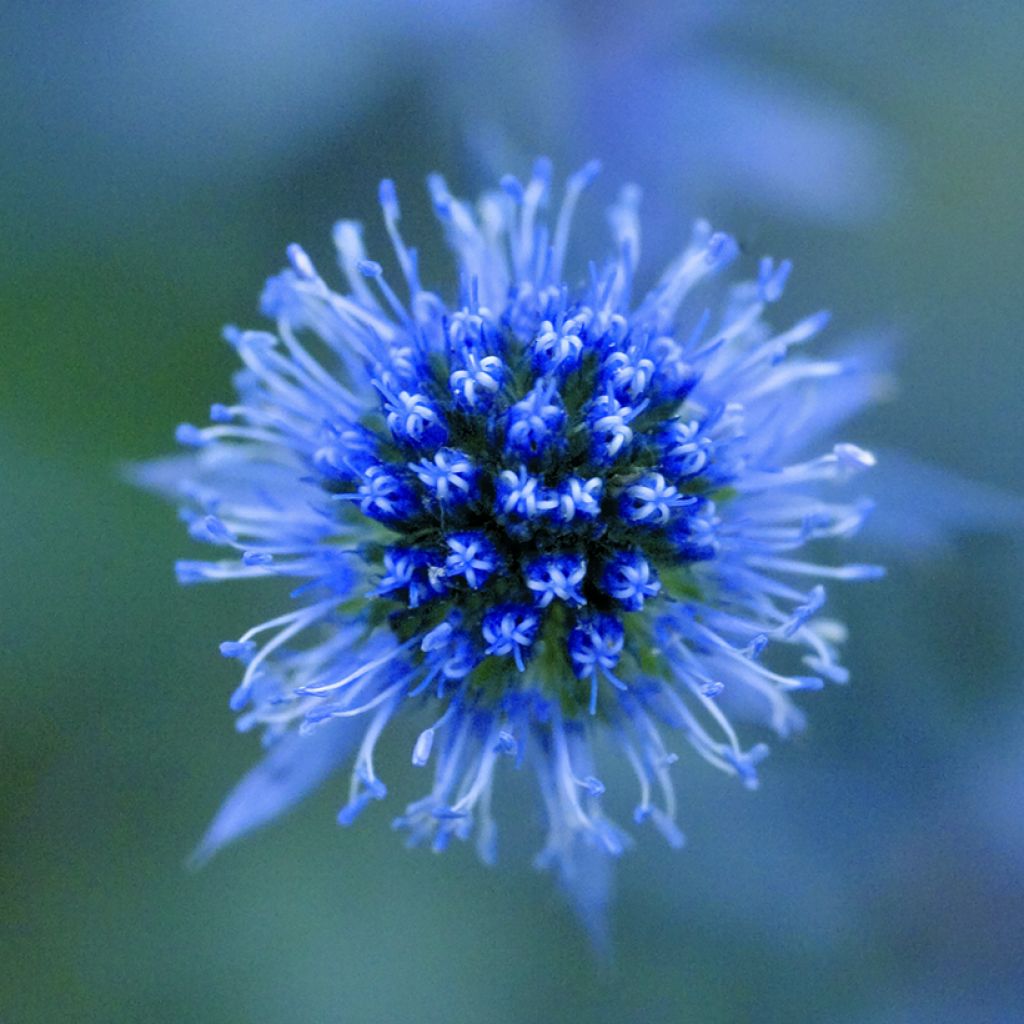

Eryngium planum Blue Glitter seeds - Flat Sea Holly, Blue Eryngo, Blue Sea Holly
Eryngium planum Blue Glitter seeds - Flat Sea Holly, Blue Eryngo, Blue Sea Holly
Eryngium planum Blue Glitter
Flat Sea Holly, Blue Eryngo, Blue Sea Holly
Why not try an alternative variety in stock?
View all →Order in the next for dispatch today!
Dispatch by letter from 3,90 €.
Delivery charge from 5,90 € Oversize package delivery charge from 6,90 €.
More information
This item is not available in your country.
Shipping country:
Andorra
Austria
Belgium
Bulgaria
Canada
Chile
Croatia
Cyprus
Czechia
Denmark
Estonia
Finland
France
Germany
Greece
Hungary
Iceland
Ireland
Italy
Latvia
Lithuania
Luxembourg
Malta
Monaco
Netherlands
Poland
Portugal
Romania
Slovakia
Slovenia
Spain
Sweden
Switzerland
United Kingdom
Schedule delivery date,
and select date in basket
This plant carries a 6 months recovery warranty
More information
We guarantee the quality of our plants for a full growing cycle, and will replace at our expense any plant that fails to recover under normal climatic and planting conditions.
Seed-only orders are dispatched by sealed envelope. The delivery charge for seed-only orders is 3,90 €.
Would this plant suit my garden?
Set up your Plantfit profile →
Description
Eryngium planum 'Blue Glitter' is a perennial blue thistle species also known as flat sea holly. This variety, very interesting for its beauty and performance, quickly reaches maturity, is very floriferous, and its superb blue is more intense. All these qualities have been rewarded with a Gold Medal Fleuroselect. 'Blue Glitter' develops numerous steel blue flowers in summer, on silver-blue floral spikes. Its captivating colour is even more appreciated in its preferred conditions: full sun, in poor, rocky, and fairly dry soil. This architectural and highly decorative plant is appreciated in slightly wild areas of the garden or in a rockery. Beautiful fresh or dried bouquets can then be made with this charming plant. Sow in a pot from March-April or sow directly in place from May to July.
Eryngium planum or Eryngium armatum, called flat sea holly, is a plant of the Apiaceae family, just like celery and carrot. It is a perennial herbaceous plant. Native to the mountains of central Europe, in the wild, it is found in dry and sunny places, in very well-drained gravelly or sandy soil. With an upright and bushy habit, the 'Blue Glitter' blue thistle quickly reaches about 80 cm in height and 50 cm in spread. Its crown develops a rosette of evergreen basal, petiolate, ovoid leaves with a heart-shaped base, thick, serrated, dark green and shiny. Tall branched, dark blue-grey stems adorned with a few small thornless, spineless leaves, rise from the basal rosettes. Flowering occurs in June-July, at the end of these branches. It takes the form of ovoid inflorescences 2 cm in diameter, composed of a multitude of tiny azure blue flowers, surrounded at the base by thin toothed bracts of the same blue, with metallic reflections. This flowering attracts many pollinating insects. Eryngium planum easily self-sows in light and well-drained soils.
The Wild Blue Thistle does not live very long (especially in fertile and moist soil) but naturally self-sows. In a countryside garden, its colour and design are appreciated alongside tall mulleins with yellow flowers, small annual nigellas with enchanting blue, catmints, and shrubby salvias, but also with cosmos or roses. In a contemporary garden, it looks superb with ornamental grasses. The cut flowers are splendid in dried bouquets. Note that 'Blue Glitter' seeds do not require vernalisation.
```
Eryngium planum Blue Glitter seeds - Flat Sea Holly, Blue Eryngo, Blue Sea Holly in pictures


Flowering
Foliage
Plant habit
Botanical data
Eryngium
planum
Blue Glitter
Apiaceae
Flat Sea Holly, Blue Eryngo, Blue Sea Holly
Cultivar or hybrid
Other Eryngium - Eryngo
Planting and care
Sow the seeds of Eryngium Blue Glitter from February to July, in trays, pots, etc. in a special seed soil in a propagator or a warm place to maintain an optimal temperature of 18-20 °C. Cover the seeds with a thin layer of vermiculite or soil. Do not exclude the light. Germination may be slow. Enclose the sowing in a polythene bag and maintain at 15-18°C for 2 weeks, then place it in the refrigerator (not the freezer) for 3 to 6 weeks. After this step, return the sowing to the recommended germination temperature. If germination does not occur within 6 to 10 weeks, return it to the refrigerator for another 3 to 6 weeks.
Regularly check your sowing stored in the refrigerator and immediately remove seeds showing signs of germination.
Transplant the young plants when they are large enough to handle into 8 cm diameter pots. Let them grow under a cold frame and plant them in the garden the following spring. Maintain a spacing of 30 cm between each plant. Choose a sunny exposure and well-drained soil.
You can also try direct sowing in place from May to July in groups of 2 to 3 seeds. Germination in 20 to 30 days.
Sowing period
Intended location
This item has not been reviewed yet - be the first to leave a review about it.
Haven't found what you were looking for?
Hardiness is the lowest winter temperature a plant can endure without suffering serious damage or even dying. However, hardiness is affected by location (a sheltered area, such as a patio), protection (winter cover) and soil type (hardiness is improved by well-drained soil).

Photo Sharing Terms & Conditions
In order to encourage gardeners to interact and share their experiences, Promesse de fleurs offers various media enabling content to be uploaded onto its Site - in particular via the ‘Photo sharing’ module.
The User agrees to refrain from:
- Posting any content that is illegal, prejudicial, insulting, racist, inciteful to hatred, revisionist, contrary to public decency, that infringes on privacy or on the privacy rights of third parties, in particular the publicity rights of persons and goods, intellectual property rights, or the right to privacy.
- Submitting content on behalf of a third party;
- Impersonate the identity of a third party and/or publish any personal information about a third party;
In general, the User undertakes to refrain from any unethical behaviour.
All Content (in particular text, comments, files, images, photos, videos, creative works, etc.), which may be subject to property or intellectual property rights, image or other private rights, shall remain the property of the User, subject to the limited rights granted by the terms of the licence granted by Promesse de fleurs as stated below. Users are at liberty to publish or not to publish such Content on the Site, notably via the ‘Photo Sharing’ facility, and accept that this Content shall be made public and freely accessible, notably on the Internet.
Users further acknowledge, undertake to have ,and guarantee that they hold all necessary rights and permissions to publish such material on the Site, in particular with regard to the legislation in force pertaining to any privacy, property, intellectual property, image, or contractual rights, or rights of any other nature. By publishing such Content on the Site, Users acknowledge accepting full liability as publishers of the Content within the meaning of the law, and grant Promesse de fleurs, free of charge, an inclusive, worldwide licence for the said Content for the entire duration of its publication, including all reproduction, representation, up/downloading, displaying, performing, transmission, and storage rights.
Users also grant permission for their name to be linked to the Content and accept that this link may not always be made available.
By engaging in posting material, Users consent to their Content becoming automatically accessible on the Internet, in particular on other sites and/or blogs and/or web pages of the Promesse de fleurs site, including in particular social pages and the Promesse de fleurs catalogue.
Users may secure the removal of entrusted content free of charge by issuing a simple request via our contact form.
The flowering period indicated on our website applies to countries and regions located in USDA zone 8 (France, the United Kingdom, Ireland, the Netherlands, etc.)
It will vary according to where you live:
- In zones 9 to 10 (Italy, Spain, Greece, etc.), flowering will occur about 2 to 4 weeks earlier.
- In zones 6 to 7 (Germany, Poland, Slovenia, and lower mountainous regions), flowering will be delayed by 2 to 3 weeks.
- In zone 5 (Central Europe, Scandinavia), blooming will be delayed by 3 to 5 weeks.
In temperate climates, pruning of spring-flowering shrubs (forsythia, spireas, etc.) should be done just after flowering.
Pruning of summer-flowering shrubs (Indian Lilac, Perovskia, etc.) can be done in winter or spring.
In cold regions as well as with frost-sensitive plants, avoid pruning too early when severe frosts may still occur.
The planting period indicated on our website applies to countries and regions located in USDA zone 8 (France, United Kingdom, Ireland, Netherlands).
It will vary according to where you live:
- In Mediterranean zones (Marseille, Madrid, Milan, etc.), autumn and winter are the best planting periods.
- In continental zones (Strasbourg, Munich, Vienna, etc.), delay planting by 2 to 3 weeks in spring and bring it forward by 2 to 4 weeks in autumn.
- In mountainous regions (the Alps, Pyrenees, Carpathians, etc.), it is best to plant in late spring (May-June) or late summer (August-September).
The harvesting period indicated on our website applies to countries and regions in USDA zone 8 (France, England, Ireland, the Netherlands).
In colder areas (Scandinavia, Poland, Austria...) fruit and vegetable harvests are likely to be delayed by 3-4 weeks.
In warmer areas (Italy, Spain, Greece, etc.), harvesting will probably take place earlier, depending on weather conditions.
The sowing periods indicated on our website apply to countries and regions within USDA Zone 8 (France, UK, Ireland, Netherlands).
In colder areas (Scandinavia, Poland, Austria...), delay any outdoor sowing by 3-4 weeks, or sow under glass.
In warmer climes (Italy, Spain, Greece, etc.), bring outdoor sowing forward by a few weeks.
